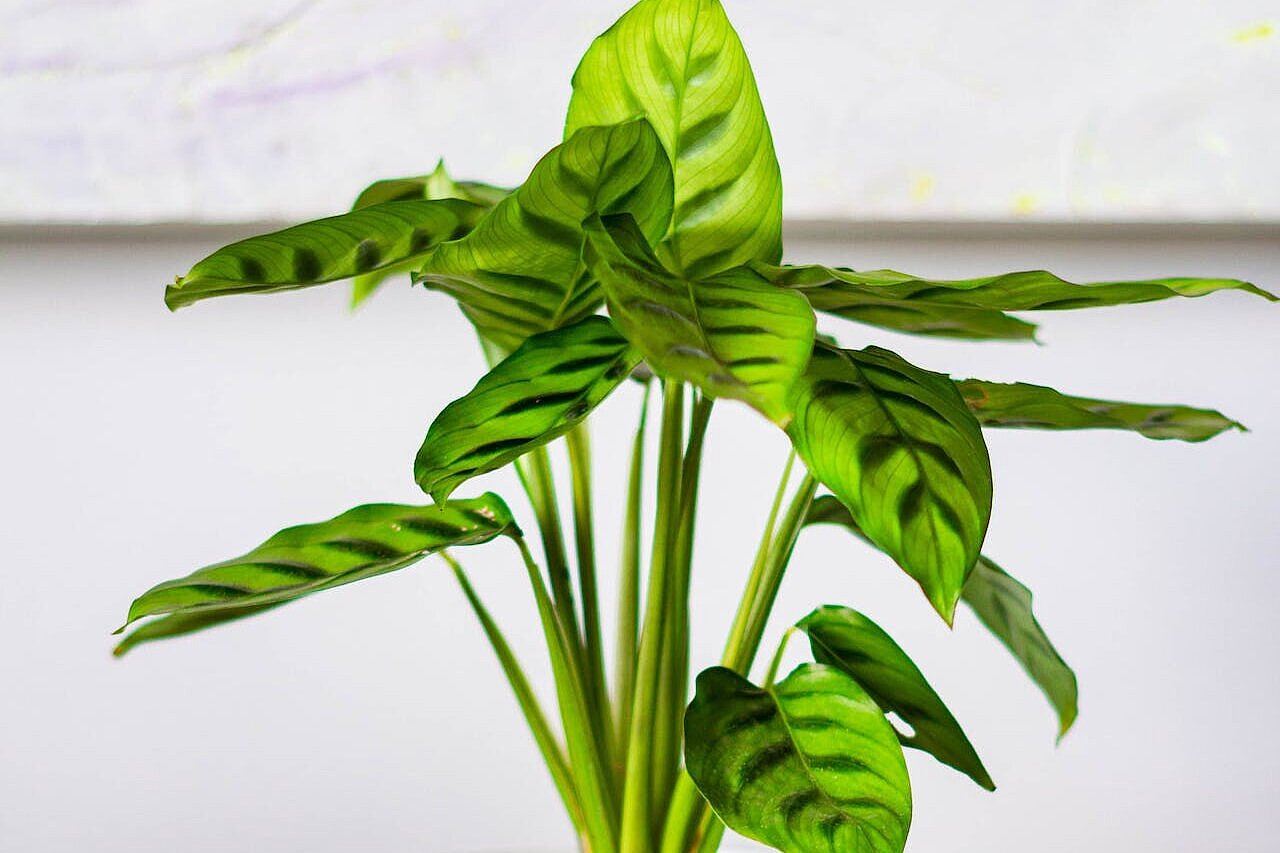Calathea lancifolia

Calathea lancifolia, known by the charming name "lance-leaved basket marant", is a popular houseplant, prized for its eye-catching leaf patterns and low-maintenance nature. But for pet owners, especially dog owners, the question often arises as to the safety of such plants with regard to the health of their four-legged friends. In this article, we go into detail about Calathea lancifolia to understand what makes this plant special and whether or not it is toxic to dogs.
What is Calathea lancifolia?
Calathea lancifolia belongs to the Marantaceae family, which is known for its diverse and decorative leaf patterns. The plant is characterized by its long, lancet-shaped leaves, which have unique patterns on the upper side and often have a purple-red color on the underside. These characteristics make Calathea lancifolia an attractive addition to any interior.
Location and care
Before we go into the safety of this plant for dogs, it is important to know how Calathea lancifolia is best cared for. It prefers indirect, bright light and high humidity, which makes it an ideal plant for bathrooms or kitchens, provided there is sufficient light. Excessive sunlight should be avoided as it will cause the leaves to fade and can cause damage.
Is Calathea lancifolia poisonous to dogs?
One of the most common concerns of pet owners is the potential toxicity of houseplants. Fortunately, Calathea lancifolia is one of the plants considered non-toxic to dogs (and cats too). This means that it contains no known toxins that could cause health problems in pets if ingested.
What does 'non-toxic' mean for your dog?
Being classified as 'non-toxic' does not mean that the plant is completely harmless if your dog decides to nibble on it. Although no toxic substances are present, eating parts of the plant can cause mild gastrointestinal discomfort, such as nausea or vomiting, especially in sensitive animals or in large quantities.
Preventive measures
To ensure that both your plants and your pets remain safe and healthy, it is advisable to take some preventative measures:
- Placement of the plant: place the Calathea lancifolia in a place that is difficult for your dog to reach. Even if the plant is not poisonous, it is better to minimize the risk of an upset stomach.
- Observation: Observe your dog's behavior around the plant. If your dog shows a marked interest in chewing or eating it, you should take extra measures to prevent access.
- Education: Teach your dog to avoid plants. This can be achieved through consistent education and, if necessary, the use of deterrents.
Calathea lancifolia is a visually appealing and low-maintenance houseplant that can be safely kept in a household with dogs. Its non-toxicity makes it an excellent choice for pet owners who want to enrich the home with green diversity without endangering the health of their pets. However, care must be taken to avoid direct contact and consumption to ensure your dog's well-being. With the right precautions, Calathea lancifolia and your dog can live harmoniously under one roof.
Properties 4
Are you looking for other ingredients with a specific property?
Just click on them to find more.
If you notice any signs of hypersensitivity or poisoning in your dog, you should see your vet immediately. We are not a substitute for a vet, but we try to be as accurate as possible. Every dog reacts differently and we recommend you get a second opinion or consult your vet if in doubt.
Stay healthy and take good care of your four-legged friend!😊
Similar to Calathea lancifolia
Calathea ornata is a perennial herbaceous plant from the Marantaceae family. It forms a rhizome-shaped rootstock from which numerous upright leaf shoots grow. The leaves are broad-lanceolate and...
Calathea zebrina is an evergreen perennial that grows from rhizomes and reaches a height of up to one meter. The leaves sit on long, fleshy stems and are oblong-oval in shape. They can grow to over...
Calathea roseopicta is a demanding houseplant that needs plenty of moisture, warmth and light. It should be placed in a bright, but not directly sunny spot, otherwise the leaves may burn. The...
Calathea makoyana belongs to the Marantaceae family and originates from the tropical regions of Brazil. It is characterized by its unique, decorative leaves, which have a striking pattern of light...



